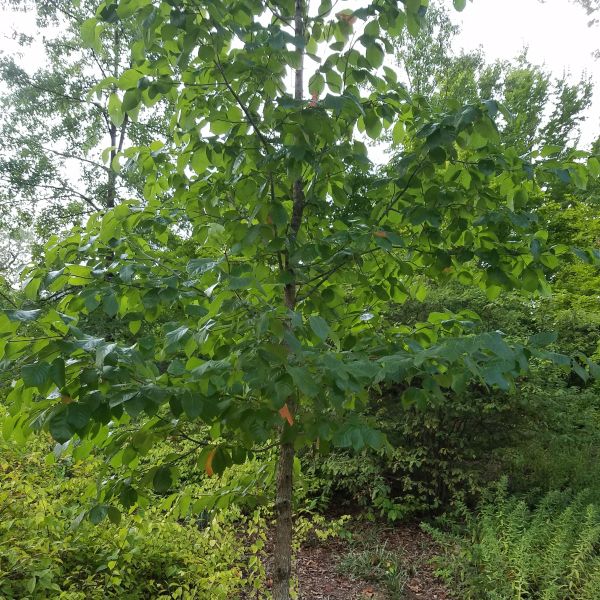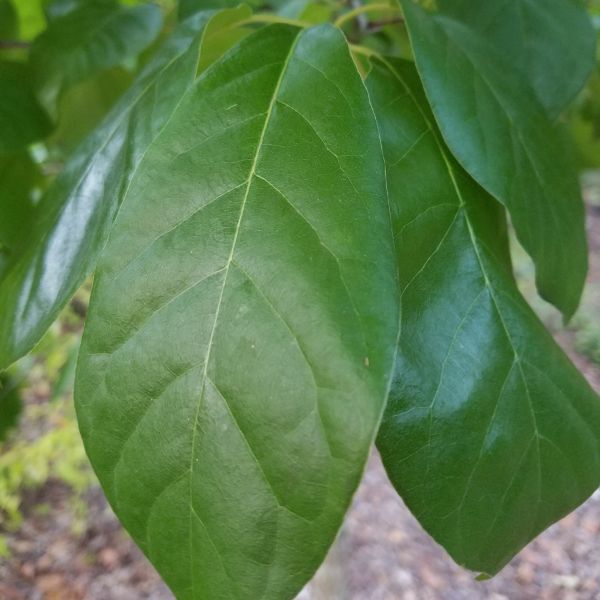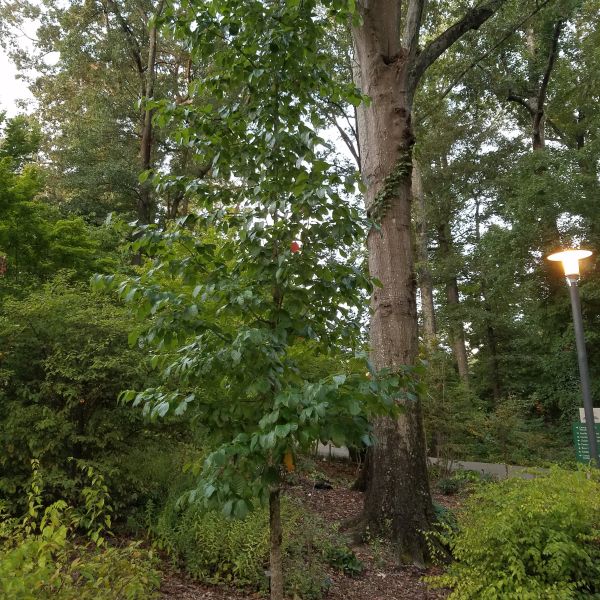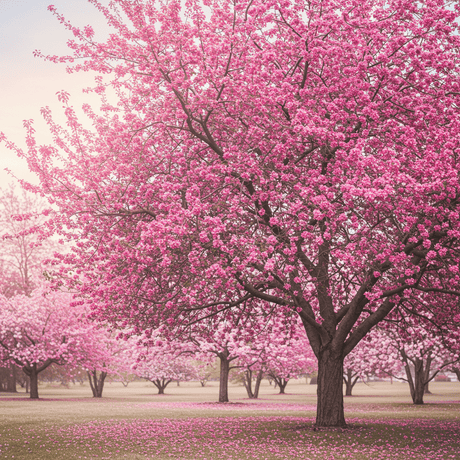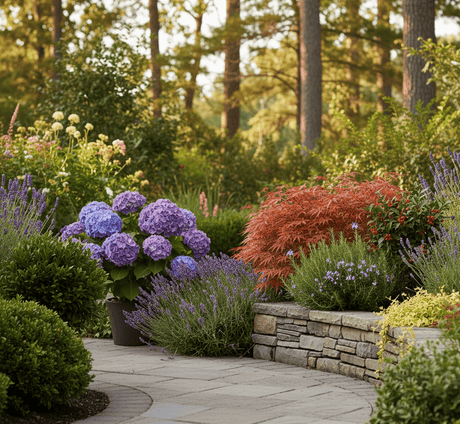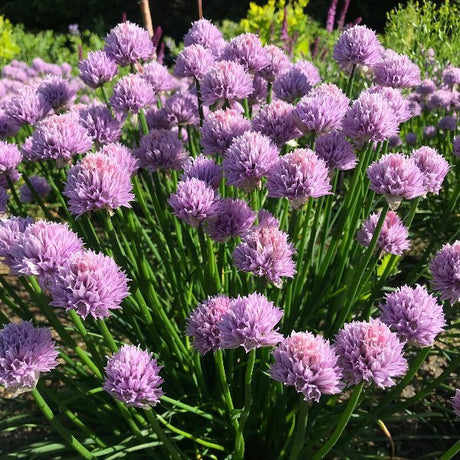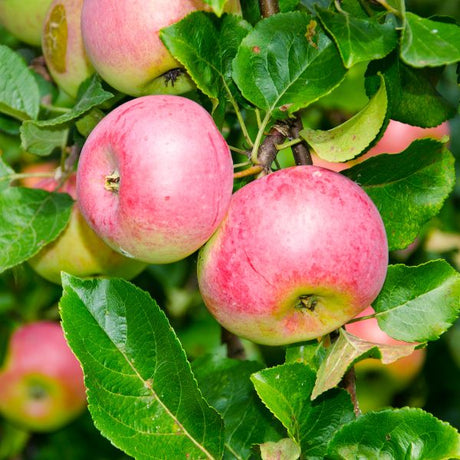Black Gum Tree
Nyssa sylvatica
Black Gum Tree - #3 Container is backordered and will ship as soon as it is back in stock.
- Stay Protected with Plant Sentry ™
Plant Sentry™
Plant Sentry™

Plant Sentry™ Protected
Your order is protected by our compliance system that:
- Prevents restricted plants from shipping to your state
- Ensures plants meet your state's agricultural requirements
- Protects gardens from invasive pests and diseases
Delivery and Shipping
Delivery and Shipping
Delivery and Shipping
Fast, Safe Plant Delivery
Ships in 3-4 business days • Tracking provided • Weather protected
| Under $50 | $9.99 |
| $50 - $99.99 | $14.99 |
| $100 - $149.99 | $16.99 |
| $150 - $198.99 | $24.99 |
| $199+ | FREE |
✓ Zone-specific timing • ✓ Professional packaging • ✓ Health guarantee
Understanding Plant Options
Nature Hills offers plants in two main formats:
- Container Plants: Grown in pots with soil, sized by container volume and plant age
- Bare Root Plants: Dormant plants without soil, sized by height measurements
Container Plant Sizes
Container sizes indicate plant age and growing capacity rather than liquid volume equivalents. Our containers follow industry-standard nursery "trade gallon" specifications, which differ from standard liquid gallon measurements.
Young Plants (6 months to 18 months old)
| Container Size | Actual Volume | Metric Equivalent |
|---|---|---|
| 2" x 2" x 3" | 0.18 - 0.21 dry quarts | 0.20 - 0.23 dry liters |
| 4" Container | 0.31 - 0.87 dry quarts | 0.35 - 0.96 dry liters |
| 4.5" Container | 0.65 dry quarts | 0.72 dry liters |
| 6" Container | 1.4 dry quarts | 1.59 dry liters |
| 1 Quart | 1 dry quart | 1.1 dry liters |
| 5.5" Container | 1.89 dry quarts | 2.08 dry liters |
Established Plants (18 months to 2.5 years old)
| Container Size | Actual Volume | Metric Equivalent |
|---|---|---|
| 2 Quart | 2 dry quarts | 2.2 dry liters |
| #1 Container | 2.26 - 3.73 dry quarts | 2.49 - 4.11 dry liters |
| 5" x 5" x 12" | 3.5 - 4.3 dry quarts | 3.85 - 4.74 dry liters |
Mature Plants (2-4 years old)
| Container Size | Actual Volume | Metric Equivalent |
|---|---|---|
| #2 Container | 1.19 - 1.76 dry gallons | 5.24 - 7.75 dry liters |
| #3 Container | 2.15 - 2.76 dry gallons | 8.14 - 12.16 dry liters |
Large Plants (3-5 years old)
| Container Size | Actual Volume | Metric Equivalent |
|---|---|---|
| #5 Container | 2.92 - 4.62 dry gallons | 12.86 - 20.35 dry liters |
| #6 Container | 5.25 - 6.01 dry gallons | 23.12 - 26.42 dry liters |
| #7 Container | 5.98 - 6.53 dry gallons | 26.34 - 28.76 dry liters |
Bare Root Plants
Bare root plants are sold by height from the root system to the top of the plant. Plants may exceed minimum height requirements.
Common Sizes:
- Trees: 1 foot, 2 feet, 3 feet, 4 feet, 5 feet, 6 feet
- Shrubs & Perennials: 1 foot, 18 inches, 2 feet
Important Notes
Container Volume Specifications
- Trade Gallon Standard: Our containers follow industry-standard "trade gallon" specifications established by the American National Standards Institute (ANSI Z60.1) for nursery stock
- Volume Variations: Actual soil volume may vary due to plant root systems and growing medium settlement
- Age Indicators: Container size primarily indicates plant age and maturity rather than liquid volume equivalents
Growing Conditions
- Plant size can vary based on variety and growing conditions
- Container size helps indicate plant maturity and establishment level
- Larger containers generally mean more established root systems and faster landscape establishment
Seasonal Availability
- Bare root plants are available seasonally when dormant
- Container plants are available throughout the growing season
- Specific varieties may have limited availability in certain sizes
Questions?
For questions about specific plant sizes or availability, please contact our plant experts who can help you choose the right size for your landscape needs.
Plant Highlights
Black Gum Tree highlights at a glance!
-
Botanical Name
-
Brand
-
Growing Zones5, 6, 7, 8, 9
-
Growth RateModerate
-
Mature Height
-
Mature Width
-
Leaf Color
-
Flower Color
-
Fall Color
-
NativeYes
-
Pollinator FriendlyYes
-
Bloom PeriodEarly Spring, Late Spring
-
Does Not Ship To
Characteristics
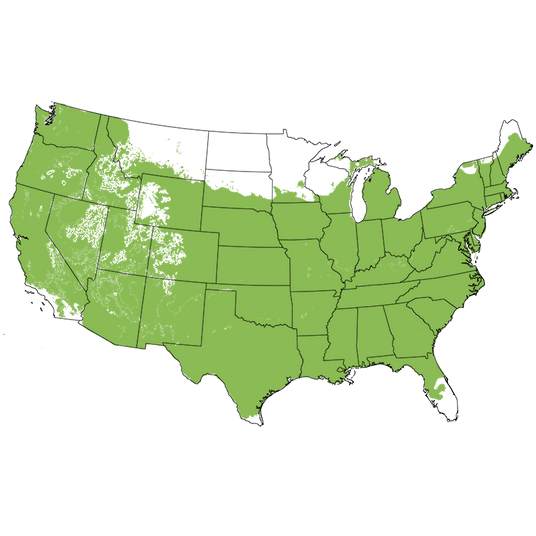
Growing Zones 5-9
Exceptional Fall Color - Native Black Gum!
One of the finest for wildlife and fall color is our magnificent Black Gum Tree (Nyssa sylvatica). Also called Sour Gum or Black Tupelo, this majestic tree is considered by many to be one of our most beautiful native trees for sale at Nature Hills Nursery!
Known for its graceful form, this deciduous tree features glossy dark green on top and pale underneath, the Black Gum tree has outstanding foliage! They'll flash and murmur in the breeze and create a very restful experience.
Cooler fall temperatures bring an incredible fall color display. The leaves turn a burnished mix of brilliant scarlet, purple, orange, and yellow.
Black Gum is pyramidal when young and then open with age, The airy, pendulous branch structure catches frost and light snow through winter. Black Gum's lovely form and textured bark brings a tremendous amount of winter interest. Standing tall at a mature height of 30-50 feet with a moderate spread, the Black Gum Tree creates an elegant silhouette that effortlessly complements its surroundings.
The tree is a significant wildlife resource, starting with the clusters of inconspicuous, greenish-white flowers that bloom for months in springtime! As you might imagine, beneficial insects appreciate reliable nectar. Its dark blue, berry-like fruits on female trees provide nourishment for birds and wildlife in late summer and fall.
This tree also boasts impressive longevity, with many specimens living over 100 years. Its sturdy, wind-resistant wood, with a dense interlocking grain, makes it an excellent choice for areas prone to storms, ensuring you enjoy its beauty for generations.
Easy to grow and hardy throughout USDA hardiness zones 5 to 9, there's little in the way of maintenance, pests, or diseases you will need to worry about! Even deer do not seem to like the taste of the Tupelo Tree!
Also known as Blackgum, Tupelo, or Sour Gum, these trees are easy to grow! Hardy throughout USDA hardiness zones 4 to 9, there's little in the way of maintenance, pests, or diseases you will need to worry about!
Landscape Application:
This special tree appears to glow in the fall when light shines through the colorful leaves. Plant this deciduous tree where you can enjoy it from multiple vantage points, including indoors. Sling yourself a hammock in their shade to while away a lazy hour or two.
Enhance the visual appeal of your outdoor space! On a large property, consider using several Black Gums in a curved planting, or allée. Fantastic as a shade tree and street tree, consider adding Black Gum to shade your outdoor entertainment areas or on the southwestern side of your home to reduce cooling bills in the summer.
Gift yourself a handsome vista to enjoy from your deck or patio. An ideal shade tree, watch your kids play on their Black Gum Tree shaded play structure! Enjoy good times with family and friends on your shaded patio.
All Black Gum are honey plants for bees and the small, dark blue fruit attracts birds. Make this spectacular native part of your diverse landscape and support a healthy ecology. This pollinator-friendly choice will help boost your yields from your Victory Gardens and Backyard Orchards.
Homesteaders can set up beehives and make good cash at Farmer's Markets and online. Create a lucrative business opportunity with an orchard of Black Gum trees and managed bee hives.
Urban gardeners will appreciate the Black Gum Tree's tolerance for air pollution and its ability to thrive in less-than-ideal conditions. Whether placed along streets, in parks, or as part of a larger green infrastructure project, this tree brings beauty, shade, and environmental benefits to urban settings. Naturalize near a creek bed or water feature, the Black Gum Tree's adaptability ensures it fits seamlessly into a variety of landscapes, from rural retreats to cityscapes.
These trees make great corporate campus trees on commercial property. Can you imagine how their vivid colors would draw people's eyes? Create a feature planting, with rows of trees equally spaced, to take advantage of the brilliant foliage!
- Showy Native To North America
- Dense Pyramidal Canopy
- Glossy Green Tropical-Looking Foliage
- Outstanding Purple, Yellow-Orange & Scarlet-Red Fall Color
- Tiny Clusters of Flowers Bloom for Months
- Excellent Nectar-Resource for Pollinators
- Source Of Tupelo Honey
- Small Fall Fruit Feeds Songbirds
- Winter Bark Interest & Incredibly Tough Wood With Interlocking Grain
- Great Deciduous Accent or Shade Tree
#ProPlantTips for Care:
Planting a Black Gum Tree is a rewarding endeavor and for the best color, plant Black Gum in a spot that receives full sun. However, if you live in a hot growing zone they will be grateful for partial shade in the afternoon.
These trees prefer moist, slightly acidic, well-drained soil. But one of the Black Gum's most enchanting features is its adaptability! It thrives in a variety of soil types, from wet, and swampy to moist soil areas to fast-draining uplands and dry soils. Making it a versatile choice for different landscapes.
Support the root system by top-dressing the area with a three-inch layer of pine bark or pine straw mulch over the root system.
Add Nature Hills Root Booster to your order, and apply it during planting according to the directions. Apply slow-release fertilizer for trees in early spring, and always follow the application rates on the label.
Give Black Gum trees a regular watering schedule, and this is most important during their first season in your landscape. This is a crucial time when a young tree's deep root system is becoming established.
Use the "Finger Test" to see when your tree needs water. Stick your finger in the ground nearby. Is it moist? Skip watering that day. If the soil is dry - time to water your tree well.
Prune to shape young trees in early spring. The goal is to develop a well-balanced tree that allows sunlight and air circulation to penetrate the canopy. These trees grow with a medium growth rate which makes them low-maintenance!
- Tolerates Arctic Cold, High Heat & Humidity
- Grows in Full Sun or Partial Shade
- Moderate Moisture Needs
- Prune In Late Winter/Early Spring
- Disease & Pest Resistant
- Deer Don't Prefer The Taste
Watch as the native Black Gum transforms your space into a vibrant, thriving haven! Plant a legacy with a managed landscape of native trees! Order Black Gum trees from our native plant experts today at Nature Hills Nursery!

